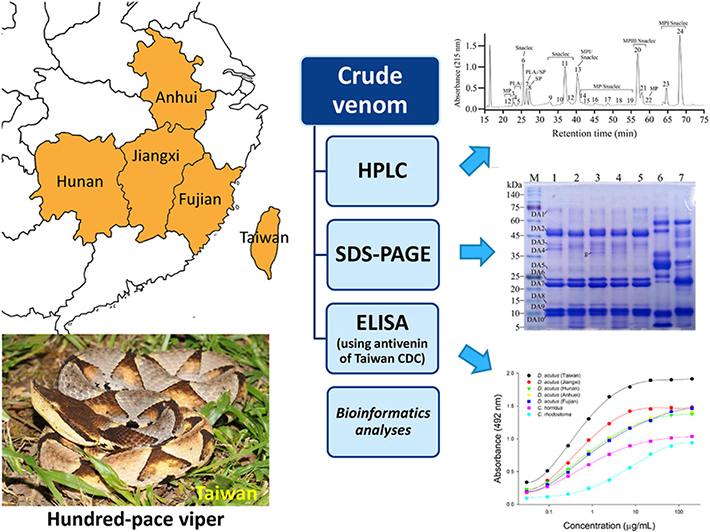
 中央研究院 生物化學研究所
中央研究院 生物化學研究所
Deinagkistrodon acutus is a medically important pitviper inhabiting mainly South China and Taiwan. The hemorrhagic effects of its envenoming are compatible to its venom, which is abundant in metalloproteases (svMPs) and C-type lectin-like proteins. In this study, we investigated geographic variations in the venom of D. acutus collected from Taiwan and four Mainland Chinese provinces: Fujian, Jiangxi, Anhui, and Hunan. The variations were assessed through high-performance liquid chromatography, non-metric multidimensional scaling analysis, gel electrophoresis, and enzyme-linked immunosorbent assay (ELISA) with a monospecific antivenom (DaMAV) generated against the Taiwanese D. acutus venom, and discussed based on venom-protein sequences in databases and literature related to D. acutus venom. Additionally, the cross-reactivity of DaMAV against Crotalus horridus and Calloselasma rhodostoma venoms was investigated. We noted differential abundances of D. acutus venom metalloproteases, C-type lectin-like proteins, and phospholipase A2, along with point mutations and selective expression of serine protease isoforms. The ELISA results revealed that the venom from Taiwan was more reactive toward Taiwanese DaMAV than the four Mainland Chinese venoms, consistent with chromatographic profile differences, whereas C. horridus venom presented moderate cross-reactivity with DaMAV. The observed immunoreactivities of these venom with DaMAV can be attributed to the high prevalence of their PIII-svMPs, which are the dominant antigens, and the conservation of PIII-svMP epitopes.
